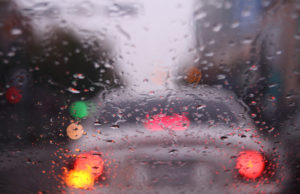 When you think of the worst driving conditions you’ve experienced, what is the first thing to come to mind? Snow, hail, icy roads, driving at night, fog, bright sun on the horizon in front of you… the list is long. Did rain make the list? Believe it or not, according to a report on USA Today, rain is the deadliest of poor driving conditions in the United States.
When you think of the worst driving conditions you’ve experienced, what is the first thing to come to mind? Snow, hail, icy roads, driving at night, fog, bright sun on the horizon in front of you… the list is long. Did rain make the list? Believe it or not, according to a report on USA Today, rain is the deadliest of poor driving conditions in the United States.
Unfortunately, rain is a pretty common condition in much of the United States, especially during the summer. The U.S. Department of Transportation Federal Highway Administration reported that annually, rain causes ten percent of vehicle crashes, which is over 573,000 crashes.
Why is rain so deadly to drivers?
One reason rain causes more deaths and car accidents than icy roads and snow is that rain is so common, drivers assume they’re accustomed to driving in it, and they are less likely to drive cautiously in rain than in other conditions.
Another reason is that while snow and ice create an obvious slick layer on the roads, many underestimate just how slippery wet roads can get. Especially after a long dry spell, roads may have a buildup of oil, leaving rainwater to sit on top of the road and slide off the sides, which makes hydroplaning and slipping much more likely.
The third reason rain can be so dangerous is reduced visibility. Fog obviously lowers visibility, but it is also necessary to drive slowly, use your lights and signals, and be cautious in the rain.
How can you stay safe on the road in the rain?
Many of these rain related accidents are preventable, but it’s necessary to understand how to drive safely in the rain.
Use your headlights.
Using your headlights is not just a way to help you see the road better, it’s also a way for other cars to see you better.
Remember that hydroplaning is a real problem.
Whether it hasn’t rained in a while and the roads are oily, you’re in the middle of a downpour and the water is piling up, a heavy rain has just let up and the road hasn’t drained yet, or it’s an old road that isn’t draining properly, there are a lot of reasons why there may be enough water on the road for your car to lose contact. Be aware, and drive accordingly, even if you think its safe.
Don’t use cruise control.
The more control your have over your vehicle, the better.
Slow down.
Speed limits are the maximum you should be driving on a road in perfect conditions, so when the weather is bad, you should be driving slower.






